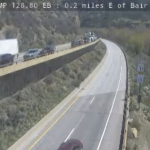What made an Eagle County woman want to ban trophy hunting of mountain lions

Katie Dolan / Courtesy image
Five years ago, Katie Dolan found a mountain lion cub in her backyard in Wolcott.
The animal was on the verge of death, orphaned and struggling to find food. Dolan said in inquiring about possible explanations for the cub being stranded with no mother to care for it, she learned that it was possible that the lion’s mother had been killed by a hunter.
“It was just so sad,” she said. “It made me realize this is so unsporting and inhumane, and that I needed to get more involved.”
The incident sent her on a quest to learn more about mountain lion hunting in Colorado, and she was bothered by what she discovered. She said more than the hunting itself, it’s the means by which animals are hunted that she finds disturbing.
Oftentimes, lions are hunted using electronic devices that mimic deer in distress, or packs of radio-collared hounds that chase the cougars up trees, allowing trophy hunters to locate the dogs on a tracking device and simply walk up to the tree and shoot the lion.

Support Local Journalism
“Oscar Wilde once said about fox hunting, which I think applies perfectly to mountain lions, ‘The unspeakable in pursuit of the uneatable,'” she said. “And I really think that that’s the crux of what we’re looking at today.”
Dolan also said that the valuable role the apex predators have in the ecosystem is reason enough to prohibit the trophy hunting of mountain lions.
“They target sick animals as prey, which is very different than a hunter’s approach to killing mule deer and elk,” Dolan said. “They play a part in controlling chronic wasting disease … and they only eat 40% of their kills, so a huge number of birds, mammals and small bugs have been found to benefit from mountain lion carcasses.”
In 2020, Dolan testified before the Colorado Parks and Wildlife Commission in opposition to a plan to increase hunting quotas on the Western Slope. In the Eagle River Valley, hunting quotas were doubled.

Dolan published a children’s book about mountain lions, “Charles, the Crowded Cougar,” and became a member of Cats Aren’t Trophies, a political committee in Colorado that was formed in September. Cats Aren’t Trophies filed 2024 ballot language to ban trophy hunting of mountain lions and fur trapping of bobcats.
Cats Aren’t Trophies points to a July 2020 independent public opinion poll that interviewed thousands of likely voters, 80% of whom felt that mountain lions help maintain Colorado’s natural ecosystems and are important for the conservation of other wildlife in our state.
The poll showed that a majority of voters in the sample were in opposition to allowing additional hunting in response to increased mountain lion sightings near communities.
Join the 17,000 readers who get the news from us daily.
Sign up for daily or weekly newsletters at VailDaily.com/newsletter
The efforts of Cats Aren’t Trophies coalition members were magnified on Thursday when the Colorado Parks and Wildlife Commission heard their comments at its monthly meeting. Of prime concern in 2024 is the fact that 44% of the mountain lions killed in Colorado so far this hunting season are female, according to recently released data. Females will be pregnant or have dependent young with them during 75% of their lives, and an orphaned mountain lion cub has only a 4% chance of survival and usually starves to death.
Colorado Parks and Wildlife commissioners, at Thursday’s meeting, voted unanimously to disallow the use of electronic calls starting March 1, and also eliminated the April mountain lion hunting season.
Colorado Parks and Wildlife program manager Mark Vieira said the killing of female mountain lions, in years past, has represented about 39% of the total lions killed, with 17% coming from female lions of breeding age, and 22% being not yet old enough to breed.
Colorado Parks and Wildlife says that adult females should represent no more than 22% of mountain lions harvested each year in order to achieve a stable population level.

Vieira said the use of hounds in mountain lion hunting leads to reduced numbers of females being killed.
Hound hunting “allows hunters to be selective of the lion age and gender … based on which tracks they’re pursuing in the snow, and whether to harvest that lion when it is treed and being visible in the tree,” Vieira said. “States that hunt lions without hound hunting have much higher rates of female harvest than Colorado.”
Vieira described the past 55 years of efforts to sustain mountain lion populations in Colorado as a success story, saying up to 1965, mountain lions were being hunted with few limits, and killing methods included illegal use of traps and poisons.
“It is in the decades since 1965 when lions became a big game species, with well-regulated harvest management, that we began to see lion populations increase,” he said.
Vieira said that by making mountain lions a big game species in Colorado, it created new standards like the development of management plans and the requirement to prepare harvested meat for consumption.
But proponents of the ballot measure aimed at new management practices say that even with the requirement to prepare harvested meat for consumption, mountain lion hunters aren’t killing cougars for the purposes of eating the meat.
The ballot language states that trophy hunting “is practiced primarily for the display of an animal’s head, fur, or other body parts, rather than for the utilization of the meat,” and aims to ban trophy hunting of mountain lions in Colorado, punishable by a fine, imprisonment, or both.
Cats Aren’t Trophies is now in the process of collecting signatures (124,238 in-person, verified signatures are required to get it on the ballot) and is encouraging Coloradans to volunteer to help gather signatures by visiting CatsArentTrophies.org.











